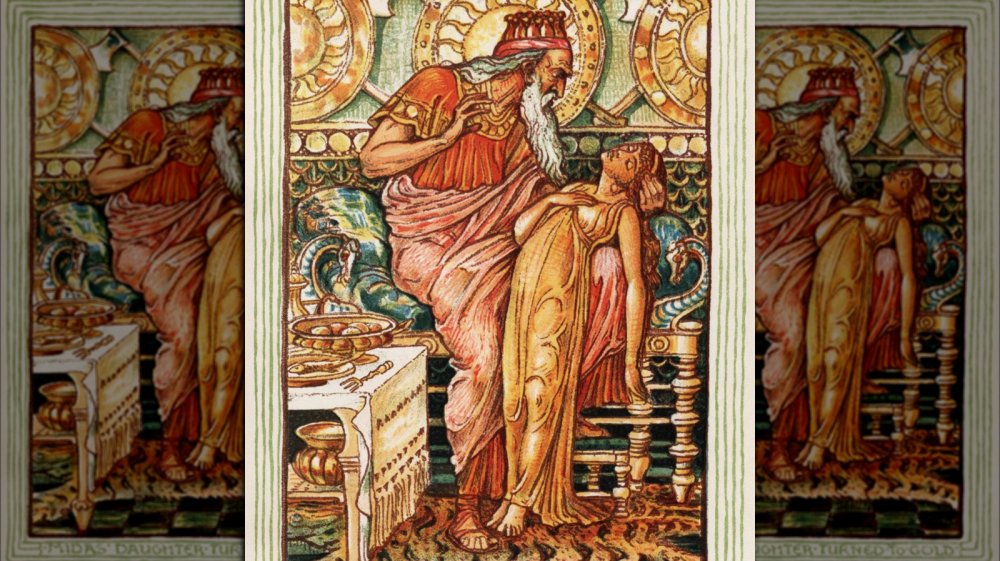Why King Midas Might Have Existed After All
Humans love to make up stories about the past and treat them as though they were really true. This tendency seems to be universal to pretty much every culture across every continent; "history" is full of fictional disasters, fictional battles, and fictional rulers. As kids, we often believe these stories. But, as we enter adulthood, we learn some unfortunate truths: the Trojan Horse never existed, says the University of Oxford, and, according to History, King Arthur was probably fictional, too.
With illusions like these shattered, many of us start to believe that the historical myths we've heard lack any basis in reality at all. So, if we were to tell you that the King Midas of ancient Greek legend was actually a real guy, you might call us crazy, right? As it turns out, Midas was almost definitely a real king, living in the region we now call Turkey around 2,700 years ago. As you can probably guess, although there's no evidence that Midas could actually turn objects into gold, there are some theories as to how that myth emerged.
As with many figures from ancient history, the details of King Midas's life are unknown. But, according to the U.S. Embassy in Turkey, it's believed that Midas lived in the 700s BCE and ruled over the Phrygians, a kingdom that was centralized in modern Turkey.
King Midas ruled the ancient Phrygians in Turkey
Besides ancient Assyrian and Greek documents describing King Midas, as related by Tales of Times Forgotten, historians have also been able to excavate a number of Phrygian artifacts from the Midas era, many of which were put on display at the Penn Museum in Philadelphia.
Under Midas's rule, the Phrygian kingdom suffered a major military defeat to the Cimmerians in 695 BCE, says Encyclopedia Britannica, possibly making Midas the last independent king of Phrygia. A few hundred years after he died, King Midas was made famous by the Greeks, who told stories about him as part of their mythological canon. As laid out in another Encyclopedia Britannica entry, a lesser-known legend says that Midas was given donkey ears after angering the god Apollo; the far more famous myth is that the gods granted Midas's wish to turn everything he touched into gold. (Things were going swimmingly until Midas realized he could no longer eat anything.)
Unfortunately, the origin of this unusual myth is also uncertain. But C. Brian Rose, curator of the Midas exhibit in Philadelphia, theorizes that the legend may have originated from the Midas dynasty's tendency to coat their textiles in iron oxide, which gave them a golden color, reports The Daily Cardinal. The golden-looking clothes of the Phrygian elite may have given rise to the world-famous "Midas touch" myth.

